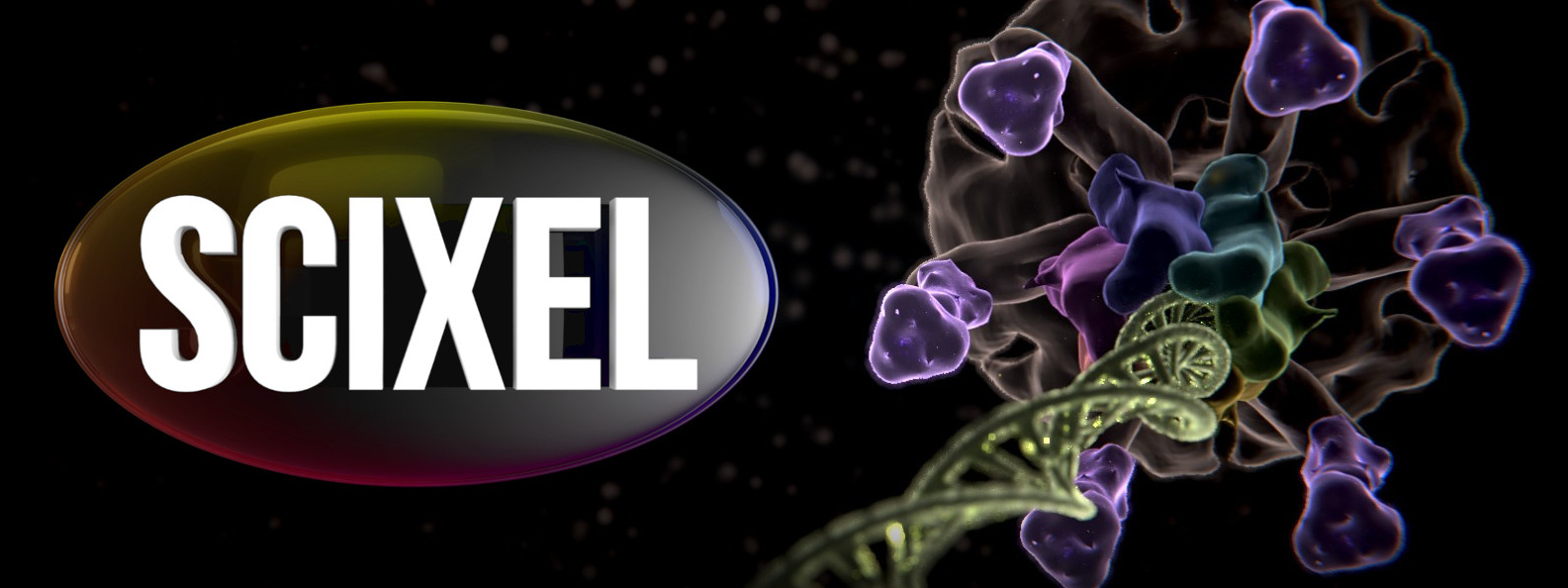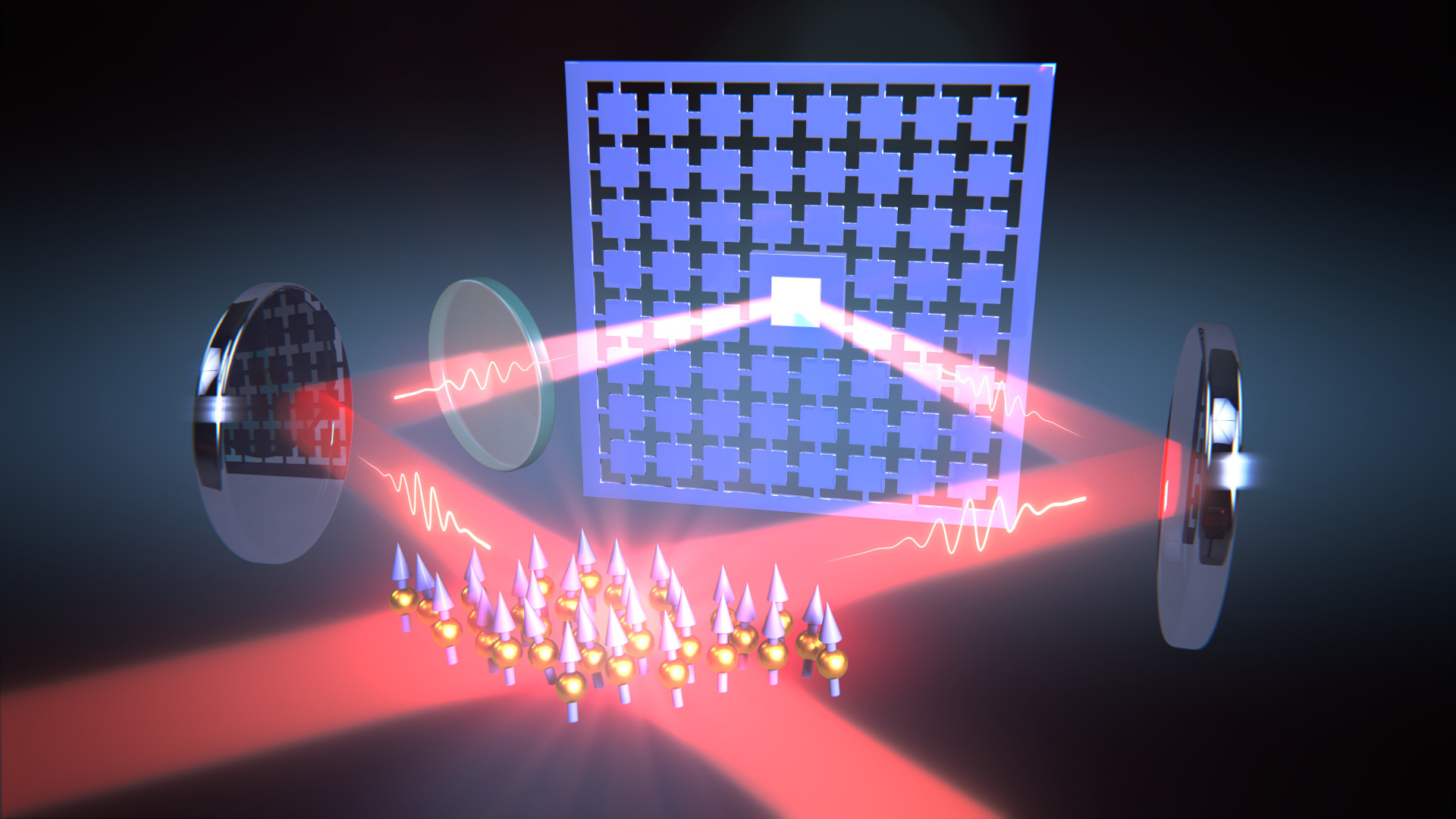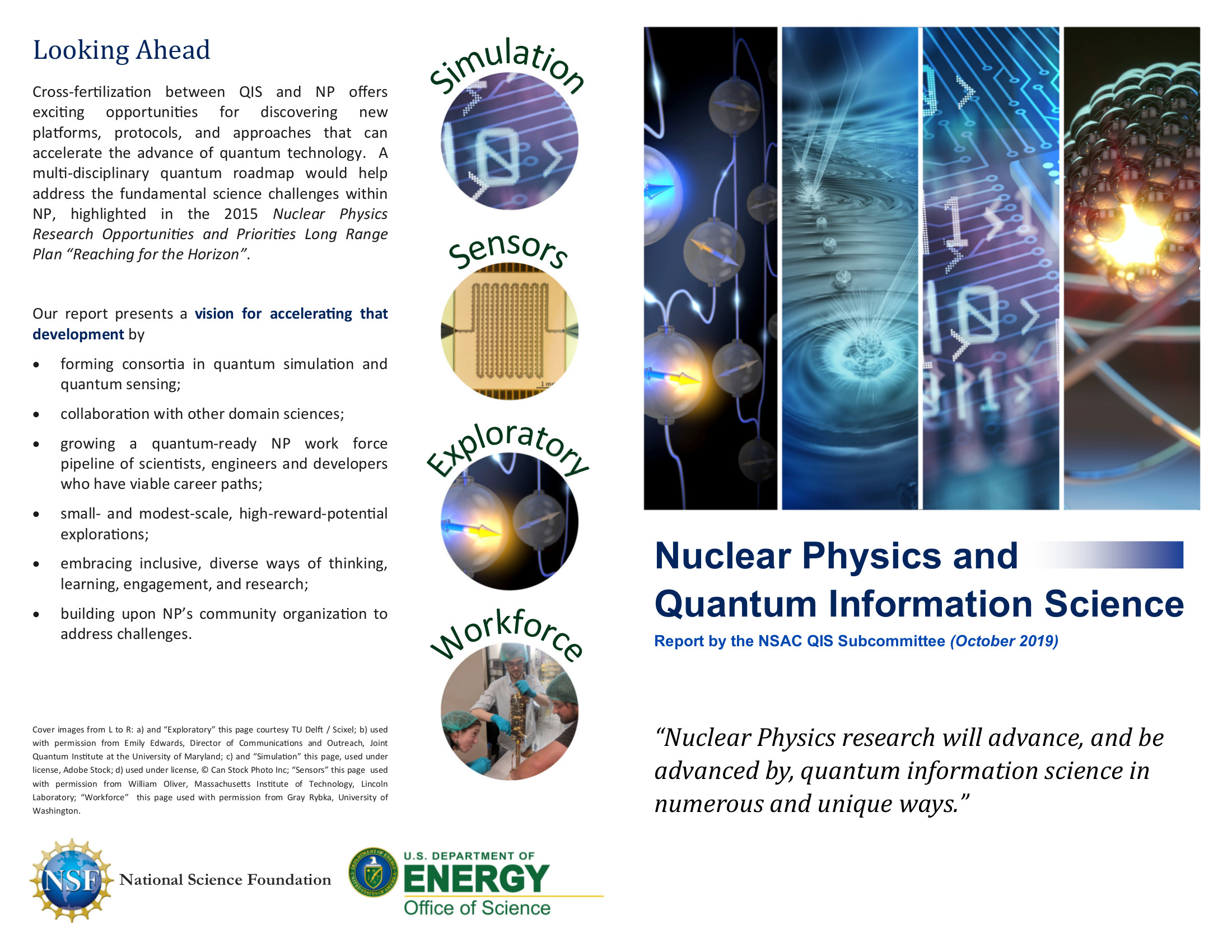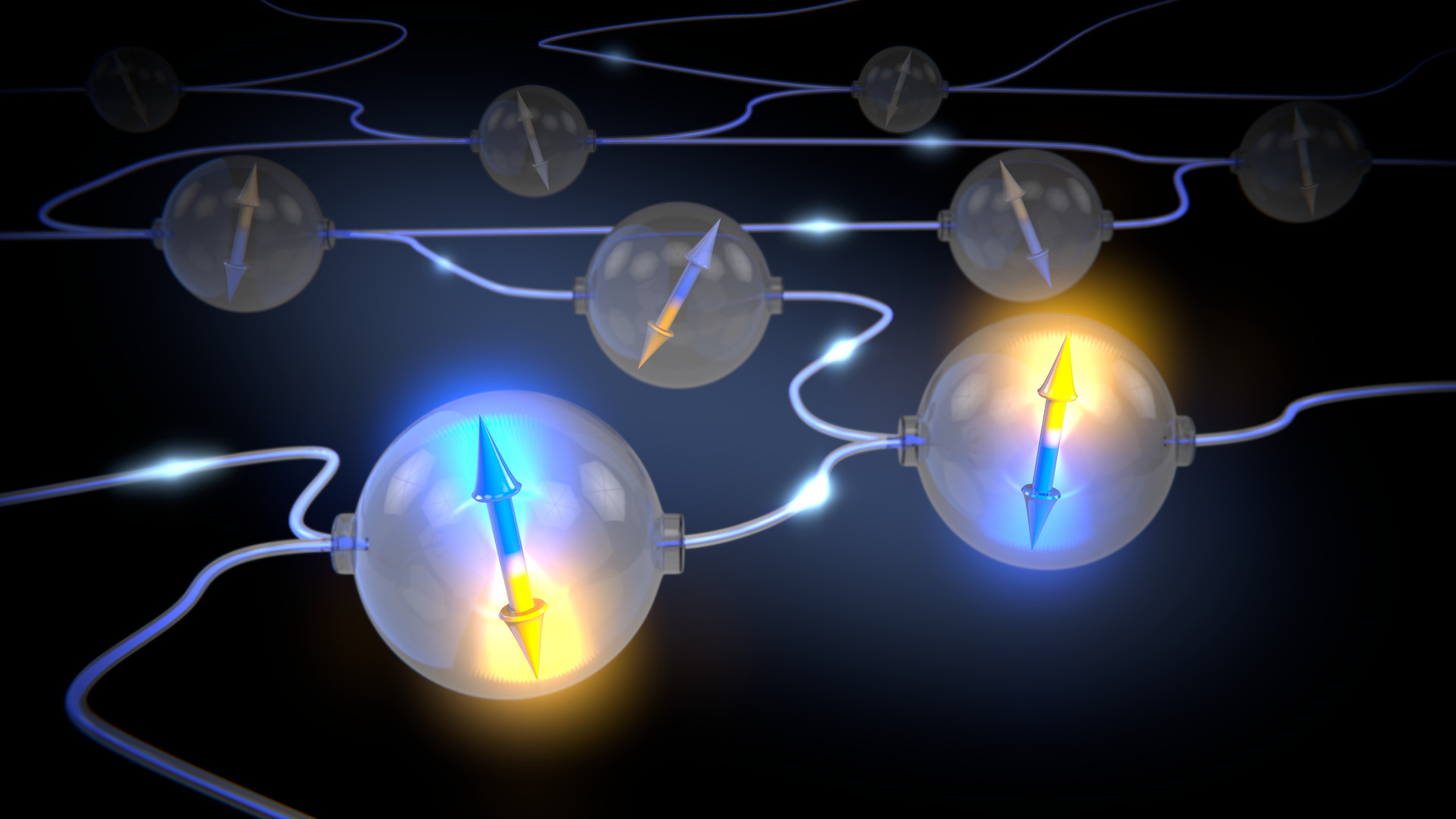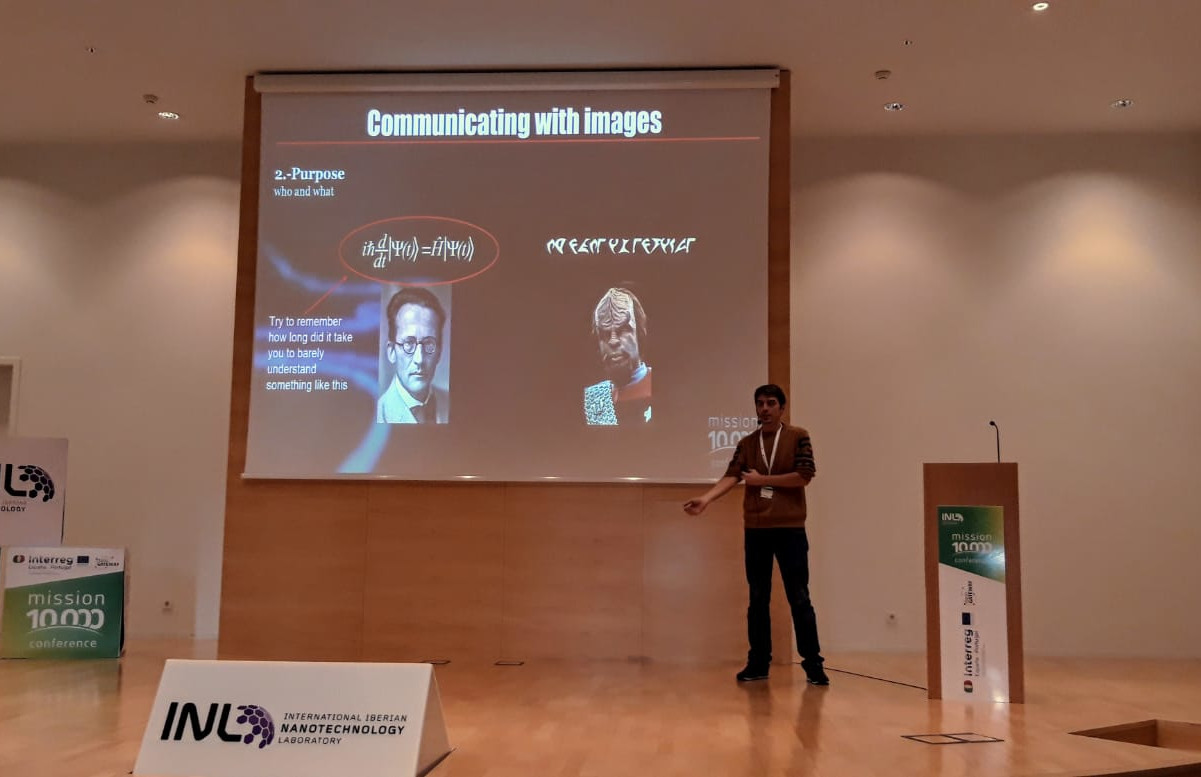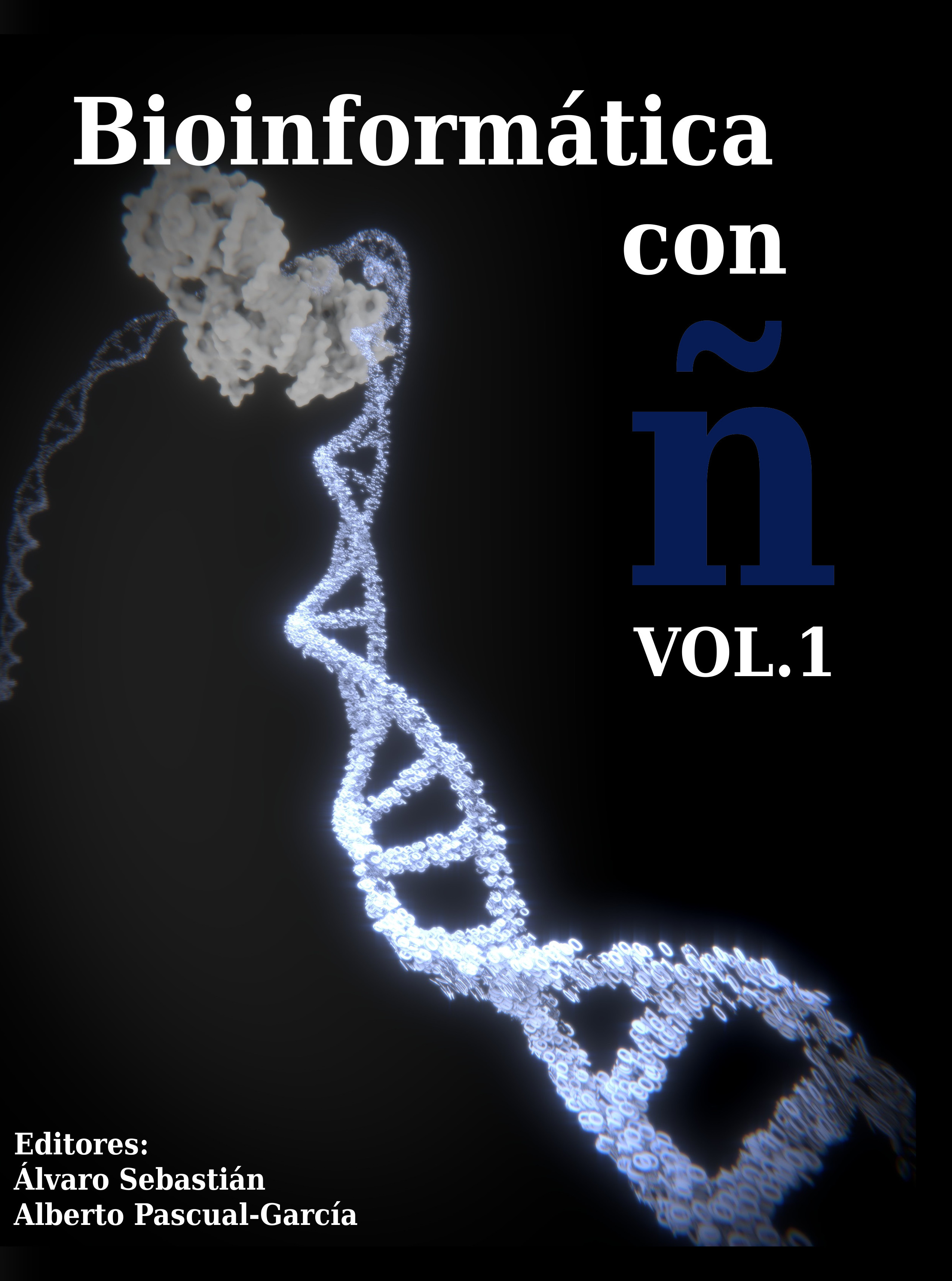Materials scientists have for decades fantasized about using DNA as a structural element in electronic circuits. And for decades, the electrical properties of DNA have remain a mystery. Hundreds of different, controversial results have appeared in the literature… That ends today!
Researchers from Jerusalem, Tel Aviv, Michigan, Cyprus, Seville and Madrid, have reported the observation of “very high currents of tens of nanoamperes” through the backbone of DNA molecules. And what it is more interesting, this conduction occurs through great distances.

This observation has required the development of several techniques: a way to “grow” DNA attached to a gold nanoparticle and a way to trap this DNA using non uniform electric fields. In fact, these techniques are important on their own and whey could be the base for the development of a novel electronic bio sensor, highly sensitive to specific sequences of DNA of RNA.
We made this picture for Prof. Juan Carlos Cuevas (UAM) to illustrate these results published in Nature Nanotechnology.
